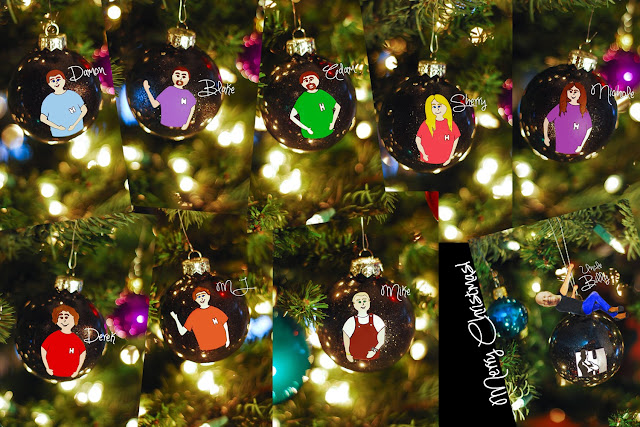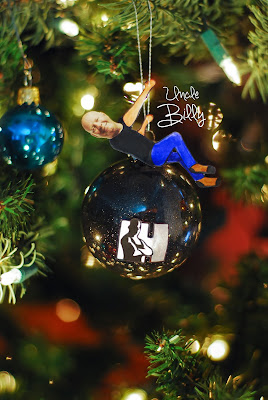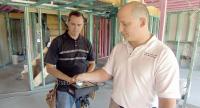With all of the holiday sales at the MAKEITRIGHT.ca store this year, you'd think that one item they would have is a Holmes Christmas ornament! Since they didn't have one, I decided to make one for myself. As with almost everything, I got a little carried away and ended up creating Make it Right crew for my tree! Now, I realize that not everyone is represented, and I also realize that I forgot Carlito (poor Carl), but hopefully you can get as much holiday joy from these as I did from making them! Merry Christmas from the Holmes Spot!

A waterproof membrane that is properly sealed and Tuck Taped helps protect a home's exterior sheathing from moisture, water damage and mould.
On a recent job, one eight-centimetre tear in the waterproof membrane on a roof deck led to about $31,000 in repairs.
Waterproof membranes are meant to protect your home from any moisture and precipitation Mother Nature decides to throw your way, whether it's snow, rain or humidity.
Since they are meant to stop outside water and moisture from getting in, it makes sense that waterproof membranes are part of your home's building envelope -- what separates the inside of your home from the outside. That includes your home's exterior walls, foundation, roof, windows and doors.
Depending on where they need to go, there are different types of waterproof membranes.
Foundation: An exterior waterproof membrane on your home's foundation is literally an extra layer of protection. There are two types: damp-proof and waterproof, and they do different jobs.
A damp-proof membrane is usually a black tar or asphalt compound that gets painted or rolled onto your typical concrete foundation. On top of that goes a mastic coating -- which is like a waterproof paste -- a mesh coating and then another layer of mastic.
This system is meant to stop vapour from penetrating the concrete -- water vapour and sometimes even radon gas. But it's not 100 per cent waterproof. Instead, I like a two-coat liquid rubberized membrane that's sprayed on, only by certified contractors. It sets into a rubbery coating that is 100 per cent waterproof.
No matter what type of coating a foundation has, it must also be protected by dimpled membrane. It stops groundwater from coming into contact with the foundation wall, but the dimples also create a drainage space that lets the wall breathe.
According to code, all you need is the dimpled membrane. But adding that extra waterproof membrane creates a better waterproofing system.
Exterior walls: Over a regular stud framed wall, you have exterior sheathing and then your exterior material.
Most exteriors -- whether they are made of brick, aluminum, vinyl, wood or stucco -- will allow some moisture to get in. If that moisture meets the exterior sheathing underneath, there's the potential for mould.
To protect the exterior sheathing, we wrap it with house wrap or moisture wrap. Tyvek or Typar are the most popular with builders. Both are a type of synthetic wrapping material that has tiny microscopic holes, so they are still breathable.
But in order for this waterproof system to work, it must be properly installed. That means Tuck Taping all the joints and seams. If not, water can get in behind it, which defeats the purpose.
There's also a superior product -- Blueskin house wrap. It has an adhesive, so instead of needing to be fastened to the sheathing, like Tyvek or Typar, it sticks to it, which minimizes punctures in the membrane.
But for it to stick properly, the sheathing must be completely dry and dust-free. Plus, to fully seal exterior walls, Blueskin should be wrapped around windowsills and door jambs. That means installing it before windows and doors go in, and properly Tuck Taping it, too.
The roof: All roofs need some kind of sheathing membrane on them to control and drain moisture that might penetrate your roof. Minimum code says it must be installed on the first three feet of the roof's edge. Having it on the first six to eight feet is better, but on the entire roof is best.
Until the 1980s we only used tar paper. But now we have much better products that do a better job of stopping moisture.
Self-adhered products, such as ice and water-shield are better. They prevent ice damming and make the installation process easier -- which cuts down on labour time, saving the homeowner some money.
Also, when you nail shingles over tar paper it leaves holes in the surface. This makes the membrane weaker. But when you nail shingles over self-adhered roofing underlayment, such as Blueskin, the adhesives close up around the nail, so there are no holes or gaps in the membrane.
Blueskin also makes a "high-temperature" product specifically for metal roofs. It has a higher melting temperature than regular ice and water membranes. Why? Because metal roof gets very hot in the summer. It's important to make sure the adhesive on the membrane doesn't melt, which can compromise the bond to the sheathing below, making it vulnerable to water damage.
Making your home waterproof pays off every time. They might not seem like much, but waterproof membranes play a huge role when it comes to making it right and watertight. Cheaping out on the small stuff usually leads to not-so-cheap big stuff in the end.
-- Postmedia Network Inc. 2013
Catch Mike Holmes on Holmes Makes It Right, Tuesdays at 9 p.m. on HGTV. For more information, visit hgtv.ca. For more information on home renovations, visit makeitright.ca.





















 For further information: For all queries regarding Mike Holmes Inspections, please contact:
For further information: For all queries regarding Mike Holmes Inspections, please contact: 